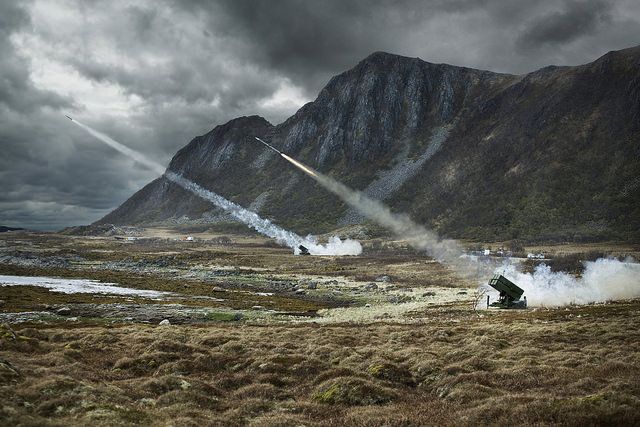Why go for NASAMS II without a competition?
By team IDI

India is planning to acquire National Surface to Air Missile System (NASAMS) from the United States. Reportedly, the system will provide protection to Indian capital against a range of threats from aircraft to drones to cruise missiles. Indian capital will be the world’s third capital, after the US’ Washington DC protected by NASAMS II and Moscow by Buk missile system, to have such an air defence shield.
The Indian decision to purchase NASAMS from the US surprised everyone. The decision was taken by the Defence Acquisition Council (DAC), the apex acquisition body of the Indian Ministry of Defence(MoD), under the leadership of the Indian Defence Minister Nirmala Sitharaman. This decision is expected to cost Indian exchequers around one billion dollars. The proposal just crossed the Acceptance of Necessity (AoN), the first stage of the procurement process. The decision was taken at a time when India is dealing with US sanction on Russia through Countering America's Adversaries through Sanctions Act (CAATSA) of 2017 which restricted India from purchasing S-400, long-range Surface-to-Air Missile from Russia. But, India decided to go ahead. The decision to go for NASAMS II appears to be an attempt to placate US government.
This decision of government raises many questions; starting from the timing of the decision to the choice of the system itself. Although the government has not sent out an official statement on the matter, therefore, one can only speculate on the rationale behind the choice. Logically, one can say that the decision has been made primarily to placate US with a billion dollar for going against CAATSA. But if the decision has been made based only on this basis then this raises many questions on the Indian government’s defence acquisition policy. India cannot afford to use its limited defence budget (not enough to cater to modernisation requirement of forces) to mollify friendly countries. This will give the wrong signal to US which is being insensitive towards Indian requirement by imposing CAATSA. Why pacify an insensitive friend!
Secondly, this decision is not in sync with the concept of NASAMS which is based on using an existing air to air missiles in air defence role by modifying and integrating it with ground-based radars. NASAMS uses US defence major Raytheon’s AIM-120 AMRAAM missile which arms all of its major fighter aircraft. This makes a lot of business sense. By using an existing missile, the US has not only reduced cost but also saved on time in developing the system. But by procuring the system, India is not exploring the possibility of using under development or existing missiles into developing our very own system. Israel, in SPYDER system, uses Derby and Python AToA missile in air defence role.
Thirdly, the modern trend is to minimise the source of military equipment and modifying system to do other jobs. But unfortunately, India is purchasing the same equipment from different countries. Since equipment from different countries does not have common spares this requires India to establish parallel procurement lines for maintaining the arsenal. Not a very comfortable situation for any country. India needs to avoid this, but unfortunately, exactly the opposite is happening.
Fourthly, is this decision a good strategic decision? Most certainly not. At a time India is facing sanctions from the US on Indo-Russian defence trade and Indo-Iranian oil trade, does this make sense for India to purchase system which is going to defend the national capital from the US? This will be viewed by the US as a sign of weakness. On the contrary, India should have desisted from going ahead with this proposal. It should not surprise people if, in near future, the US uses legislation similar to CAATSA to exploit India to its benefit.
Finally, since India has a policy of ‘Make in India’ then why not look at options for similar existing systems like Russian Tor-E2 which it is offering to other nations. Why not go for competitive bidding under ‘Make in India’? India, in past, has stated that it will prefer tender route to nomination route in defence procurement. The tender route should be followed for every defence item except for the procurement of strategic systems like anti-ballistic missiles, SSNs SSBNs, etc. NASAMS do not fall under this category. Therefore, for the greater good, India should explore an existing system that can provide air defence coverage to the Indian capital. Even if India, takes the Foreign Military Sales route, under any circumstances, will not only be able to procure NASAMS anytime before 2022, then why not use these years to go for competitive bidding? One never knows India might land up with a system which is more compatible with existing air defence system and also with underdevelopment air-to-air missiles like Astra.




